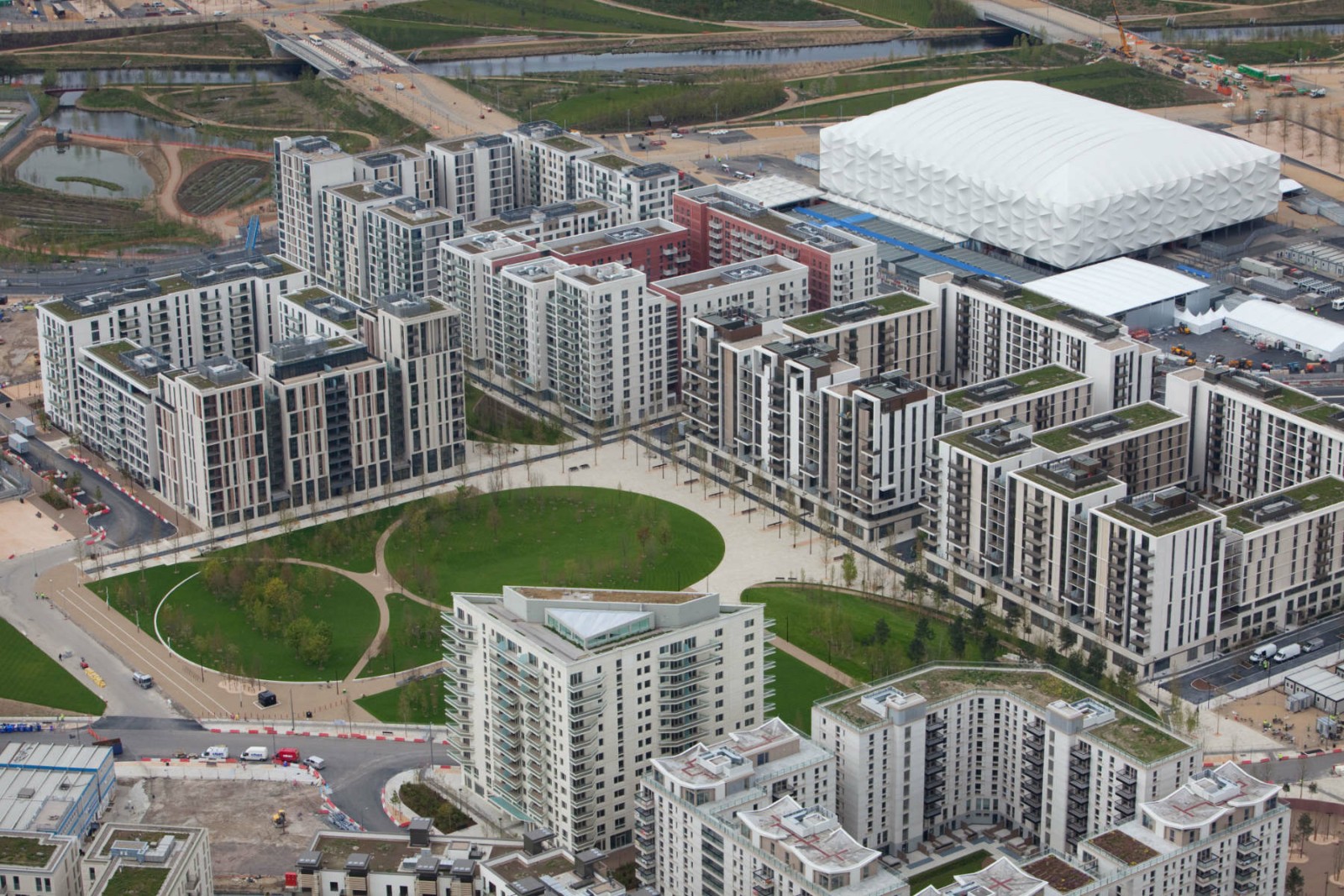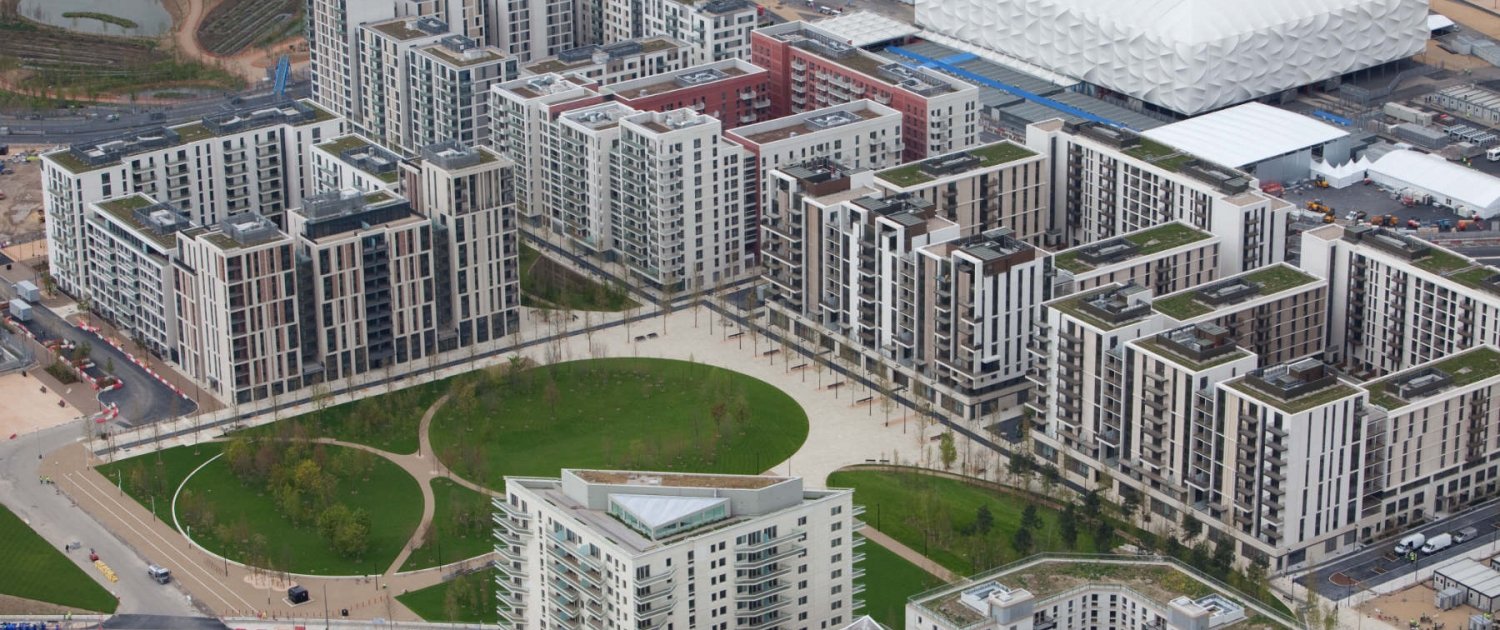Sustainable Urban Living – East Village
East Village is one of the most sustainable communities in the UK. It is part of the London 2012 Olympic legacy and was converted from the Athletes’ Village into new homes after the Games. One of the main aims of the Olympics was to be the most sustainable Games ever.

East Village, London – CC2.0 EG Focus https://www.flickr.com/photos/egfocus/7090449501/
How is East Village an example of sustainable urban living?
Transport
East Village has an integrated transport solution. Local trains and bus services connect to the London Underground. Stratford International station provides access to Central London and Europe.
Green open spaces
10 hectares of parkland have been created, containing hundreds of newly planted trees and ponds. These provide habitats for wildlife.
Modern, high-density apartments
The athletes’ village has been transformed into modern, high-density apartments. These have been constructed to a high standard of energy efficiency and insulation. Apartments lose less heat than low-rise housing.
Green roofs
A green roof or living roof is a roof of a building that is partially or completely covered with vegetation and a growing medium planted over a waterproofing membrane.
Green roofs have been included on residential blocks, providing habitats for wildlife as well as slowing the flow of surface run-off from rain.
Affordable housing
Half of the homes are available to ordinary people in East London. They are affordable as they are available to rent at lower rates.
Car parking
Parking is provided for each apartment block and residents must pay extra for a space. However, the area has good walking and cycling routes to encourage people from their cars.
Shops and services
There are 35 independent shops, cafes and bars serving the local community. This keeps money in the local area as they are less likely to travel to shop.
Public services
A large health centre has been constructed along with a school for 2000 3 to 18-year-olds. These services are essential to support the local community.
What green spaces have been created in East Village?
Although East Village is a high-density urban area, 37 per cent of the land is green open space. 10 of the 27 hectares that make up East Village is green space, including:
- a wetland area that recycles rainwater, which is used for flushing toilets and water plants;
- a large green park containing a children’s play area;
- green roofs;
- each apartment block having a shared, private green space; and
- fruit trees in an orchard in the children’s play area.
Waste Recycling
- 99% of parkland waste is recycled instead of being sent to landfill.
- Households are also encouraged to recycle with fortnightly collections of cardboard, paper, plastic bottles, tins and cans.
- Recycling is taken to a sorting facility at Jenkins Lane Reuse and Recycling Centre, where materials are separated. The sorted materials are made into bales and sent off to be recycled into new products.
How efficient is East Village?
Compared to other urban areas, East Village uses much less water and energy.
Water use in East Village is 50 per cent less than typical in urban areas. This has been achieved through recycling water naturally and using reed beds in wetland areas. Rainwater is filtered naturally before being recycled and used for irrigating plants and flushing toilets. Fresh drinking water is on a separate system.
East Village uses 30 per cent less energy than an average urban area. This is because of combined heat and power (CHP). CHP involves generating electricity and heat from the same energy source, in this case, burning biomass. Water is heated to create steam that drives a turbine to generate electricity. The hot water produced in this process is pumped around the nearby apartments and is used to heat them.
What are the benefits of East Village?
Social
- More than 10,000 new homes will have been built by 2030, and more than 10,000 new homes will have been built in the park.
- Five new neighbourhoods will be completed by the end of the decade.
Economic
- New jobs in tourism and construction have created a multiplier effect.
- By 2030 over 20,000 jobs could be created, bringing £5 billion into the area.
- The Westfield Stratford shopping centre created 10,000 permanent new jobs from day one, including 2,000 for previously unemployed local people.
Environmental
- The Olympic bid was, in part, successfully based on sustainability. The park is sustainable in many ways, including public transport, walking and cycling routes, the water and energy-efficient design of homes and the protection of green spaces and natural habitats.
- 300,000 new plants have been planted in the wetlands.
- The London Olympic Athletes’ Village is the largest sustainable homes project in the UK.
- Before construction, the Olympic Delivery Authority (ODA, 2015) excavated and cleaned more than 2.3 million cubic metres of contaminated soil.



